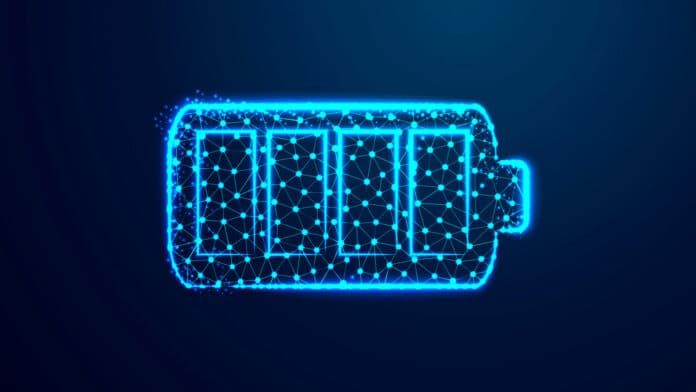With the spread of electric vehicles, the low-temperature operation of LIBs has become an issue due to the performance difference depending on regions and seasons. Nonaqueous carbonate electrolytes are commonly used in commercial lithium-ion batteries (LIB).
This essential battery component moves ions, which transport charge between the battery’s two electrodes, allowing the battery to charge and discharge. But at below-freezing temperatures, the liquid starts to freeze. The effectiveness of charging electric vehicles in cold climates and during the winter is substantially hampered by this issue.
To address that problem, a team of scientists from the U.S. Department of Energy’s (DOE) Argonne and Lawrence Berkeley national laboratories developed a fluorine-containing electrolyte that performs well even in sub-zero temperatures. This new electrolyte can significantly improve the low-temperature performance below −20 °C.
While transported through the electrolyte, the ions sit at the center of clusters of four or five solvent molecules. These clusters strike the anode surface during the first few charges and create a protective layer known as the solid-electrolyte interphase. This layer functions as a filter once it has been created. Only the lithium ions can travel through the layer since the solvent molecules are blocked. Lithium atoms can be stored in the graphite structure of the anode in this fashion. Electrochemical reactions that occur after a discharge cause the lithium to release electrons that can be used to power vehicles.
In cold temperatures, the electrolyte with carbonate solvents begins to freeze, thereby losing its ability to transport ions. This happens because the ions are strongly bound to the solvent cluster and require high energy to move and enter the interface layer.
In this study, scientists achieved this electrolyte by tailoring the chemical structure, i.e., altering the fluorination position and the degree of fluorination of ethyl acetate solvent. The composition with the lowest energy barrier for liberating lithium ions from the clusters at extremely low temperatures was found. They also discovered why that specific mixture performed so effectively at the atomic level. It depends on how many and where the fluorine atoms are located within each solvent molecule.
The team’s fluorinated electrolyte held steady energy storage capacity during tests with lab cells for 400 charge-discharge cycles at minus 4 F. Even at that extremely low temperature, the capacity was comparable to a carbonate-based electrolyte-based cell at ambient temperature.
John Zhang, Argonne group leader, said, “Our research thus demonstrated how to tailor the atomic structure of electrolyte solvents to design new electrolytes for sub-zero temperatures.”
“The antifreeze electrolyte has a bonus property. It is much safer than the carbonate-based electrolytes that are currently used since it will not catch fire.
“We are patenting our low-temperature and safer electrolyte and are now searching for an industrial partner to adapt it to one of their designs for lithium-ion batteries.”
Journal Reference:
- Dong-Joo Yoo, Qian Liu, et al. Rational Design of Fluorinated Electrolytes for Low-Temperature Lithium-Ion Batteries. Advanced Energy Materials. DOI: 10.1002/aenm.202204182
